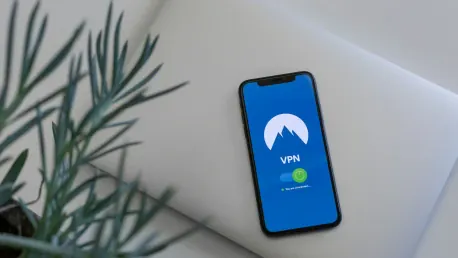The quest for online privacy has never been more crucial in an era characterized by pervasive digital surveillance and data breaches. With multiple tools available, navigating the complexities of online privacy is essential for any internet user. Two such tools, VPNs and incognito mode, offer considerable benefits and unique features. Understanding their functions and limitations is crucial for leveraging them effectively.
Understanding Incognito Mode
Incognito mode, often referred to as private browsing, is a browser feature designed to provide temporary privacy during online sessions. When activated, it ensures that browsing history, cookies, and site data are automatically cleared once the window is closed. This feature is particularly useful for preventing the next user of the same device from seeing the previous user’s web activities and logins.
While it delivers a measure of privacy by clearing local data, incognito mode has notable limitations. It does not offer complete anonymity, as websites visited, employers, and internet service providers (ISPs) can still monitor user activities via network traffic. This means that the actual content of what a user is browsing and the websites accessed remain visible to entities beyond the user’s immediate control. Additionally, incognito mode does not prevent tracking by external websites and advertisers who can use IP addresses and other browsing components to build a profile of the user’s online behavior.
Incognito mode’s primary advantage lies in preventing data from being stored locally on the device. It is helpful for users who share devices or want to keep their browsing history and session data private from other users on the same system. However, users looking for more comprehensive privacy should recognize the limitations of incognito mode and consider supplementary measures.
The Essentials of VPN Security
Virtual Private Networks (VPNs) provide a stronger shield for online privacy by masking users’ IP addresses and encrypting internet traffic. This encryption prevents third parties, including ISPs, from tracking browsing activities and helps bypass region-specific content restrictions. By routing traffic through encrypted servers located in various parts of the world, VPNs effectively conceal a user’s online actions and physical location.
Despite their advantages, VPNs are not impervious to privacy breaches. Vulnerabilities such as device-level tracking and browser fingerprinting can still expose users’ details, highlighting the need for ongoing vigilance and proper VPN configuration. Device-level security breaches can occur if the VPN is not configured correctly, leaving potential gaps that can be exploited by hackers or internet service providers.
Another consideration is that while VPNs encrypt data, they do not prevent websites from tracking user behavior through the user’s browser or cookies. Techniques such as browser fingerprinting, where websites gather data about the user’s browser and device to create a unique identifier, can still be used to track online activities. These vulnerabilities underscore the importance of using VPNs as part of a broader privacy strategy rather than relying on them exclusively.
Overall, while VPNs offer a robust layer of security by encrypting data and hiding IP addresses, they are most effective when users are aware of their limitations and use additional privacy tools and strategies. Proper configuration and maintenance of the VPN are essential to ensure maximum protection.
Combining VPN and Incognito Mode
Using incognito mode alongside a VPN can offer layered security, addressing several privacy concerns. This combination enhances protection by clearing local data while the VPN shields internet traffic from external scrutiny. The use of both tools concurrently allows users to prevent immediate tracking of browsing activities and simultaneously encrypt their data, thereby reducing the risk of surveillance from multiple angles.
However, this duo does not entirely eliminate tracking risks. Persistent threats such as supercookies and browser fingerprints continue to pose challenges. Supercookies are more resilient tracking tools that are stored at the network level and are thus not cleared by traditional methods used to remove regular cookies. These can accumulate and be particularly difficult to remove, providing sophisticated advertisers and cyber actors with means to monitor user activity despite privacy measures.
Additionally, network administrators can also detect VPN usage patterns, potentially exposing user activities even with encrypted traffic. Administrators may use network traffic analysis to identify anomalies peculiar to VPN usage, thereby pinpointing when a VPN is being used. This can lead service providers or network administrators to scrutinize user behavior more closely.
Although combining VPN with incognito mode undoubtedly strengthens privacy defense, it is important to acknowledge the continued existence of certain tracking and monitoring techniques that can pierce through these defenses. Users must remain vigilant and continuously adapt their privacy measures to enhance their effectiveness.
Effective Configuration Strategies
Maximizing privacy requires thoughtful configuration of these tools. Enabling VPN browser extensions and ensuring their compatibility with preferred browsers like Chrome and Firefox is vital. Browser extensions streamline the user experience by embedding VPN controls within the browser interface, making it simpler to switch the VPN on or off, or to change server locations. Ensuring the extensions are up-to-date and compatible with the latest browser versions is essential for maintaining security.
Activating VPN settings explicitly for incognito mode sessions further bolsters the privacy shield. This includes ensuring that the VPN remains active even when switching between regular and incognito browsing modes. Some VPNs offer auto-connect features that can be configured to initiate automatically whenever the browser enters incognito mode, thus providing a seamless protective layer without relying on the user to manually activate it each time.
Employing profile-specific configurations can effectively compartmentalize work and personal browsing activities, adding an extra layer of security. Such measures ensure VPN and incognito mode function optimally to safeguard user data. Creating different profiles on the browser for various activities can help segregate cookies, sessions, and browsing histories, keeping work-related browsing separate from personal activities.
The consideration of split tunneling, a feature in some VPN services that allows users to route part of their traffic through the VPN while directing the rest through their regular internet connection, can also enhance efficiency and manageability without compromising security. Selecting such configurations demands an in-depth understanding of the VPN’s features and ensuring they are tailored to the user’s specific needs.
Exploring Alternative Privacy Tools
Beyond VPNs and incognito mode, other tools like the Tor browser and physical security keys offer added protection. The Tor browser enhances anonymity by routing traffic through multiple layers of encryption, making network location tracing highly difficult. Each hop in the Tor network is managed by a volunteer-operated server that encrypts and decrypts data multiple times, thus providing a high level of anonymity.
Physical security keys serve as a formidable defense against phishing and unauthorized account access. These hardware-based keys employ cryptographic protocols to verify a user’s identity, adding an additional authentication layer. When paired with standard practices such as two-factor authentication (2FA), hardware security keys significantly reduce the risk of unauthorized access, particularly in scenarios where passwords might be compromised.
Integrating these additional tools can lead to a more comprehensive privacy strategy. Whereas VPNs and incognito modes provide a good foundation, the added layers provided by tools like Tor and physical security keys can fortify defenses against the more sophisticated methods of tracking and unauthorized access. The continued evolution of privacy threats necessitates a multi-tool approach to maintain the rigor of personal digital security.
Corporate Monitoring Realities
In enterprise environments, privacy challenges intensify with corporate network monitoring tools. These tools can track browsing histories on work devices and identify VPN and incognito mode usage through deep packet inspections. Corporate policies allowing monitoring can capture and log web activities conducted using corporate internet connections and devices, thus diminishing the expected privacy gained through using VPNs or incognito modes.
Personal devices should be fortified with separate user accounts and BIOS-level security measures for greater protection. Creating separate user profiles on devices can help isolate work-related and personal data, ensuring that monitoring conducted under corporate policy does not extend into personal browsing habits. BIOS-level passwords and encrypting disks can prevent unauthorized access even at the hardware level, offering an additional protection layer that ensures personal data stays separated from work-related monitoring policies.
Users need to be aware of the specific policies in place within their organization and understand how these policies might impact their expectations of privacy. Corporate monitoring systems and policies can vary significantly in scope and technical execution, and understanding these intricacies can help users take informed steps to buoy their personal privacy, even in professional environments.
Legal Implications for Privacy Tools
Data retention laws and recent legal rulings significantly impact the effectiveness of privacy tools. ISPs may be compelled to disclose network activity, undermining claims of private browsing even with VPN usage. In many jurisdictions, laws require ISPs to keep logs of user activity for extended periods, making it possible for authorities to access these records with an appropriate legal mandate.
The understanding of jurisdictional regulations is crucial for users to adapt their privacy strategies accordingly. Data protection laws can vary widely by country, and while some regions might uphold stringent privacy protections, others may have minimal restrictions on data collection and retention practices. Users should be aware of the legal environment they operate in to adjust their tools and tactics.
Privacy enthusiasts must stay updated on changes in data protection laws and how these might influence their use of VPNs, incognito modes, and other privacy tools. Engaging with legal privacy advocacy groups and following regulatory updates can help users stay aware of how changes in legislation might necessitate adaptations in their digital privacy strategies.
Conclusion
In a world where digital surveillance and data breaches are rampant, online privacy has become more important than ever. With numerous tools at our disposal, it’s essential for any internet user to understand how to navigate online privacy complexities. Two of these tools, VPNs (Virtual Private Networks) and incognito mode, offer significant advantages while serving different purposes.
VPNs have become popular because they encrypt your internet connection, making your online activities private from prying eyes, including ISPs (Internet Service Providers) and hackers. They can also mask your actual location, allowing you to access content that might be restricted in your region. However, it’s crucial to remember that a VPN does not make you completely anonymous; it just makes it harder for third parties to trace your online activities.
On the other hand, incognito mode—available in most web browsers—prevents the storage of your browsing history, cookies, and other site data on your device. This can be useful for private browsing sessions, such as shopping for gifts or accessing multiple accounts simultaneously. However, incognito mode doesn’t prevent websites or ISPs from tracking you; it just keeps your local browsing session private.
Understanding the functions and limitations of both VPNs and incognito mode is critical for maximizing their benefits. Utilizing them appropriately can help you strengthen your online privacy and shield your digital footprint in an increasingly connected world.









